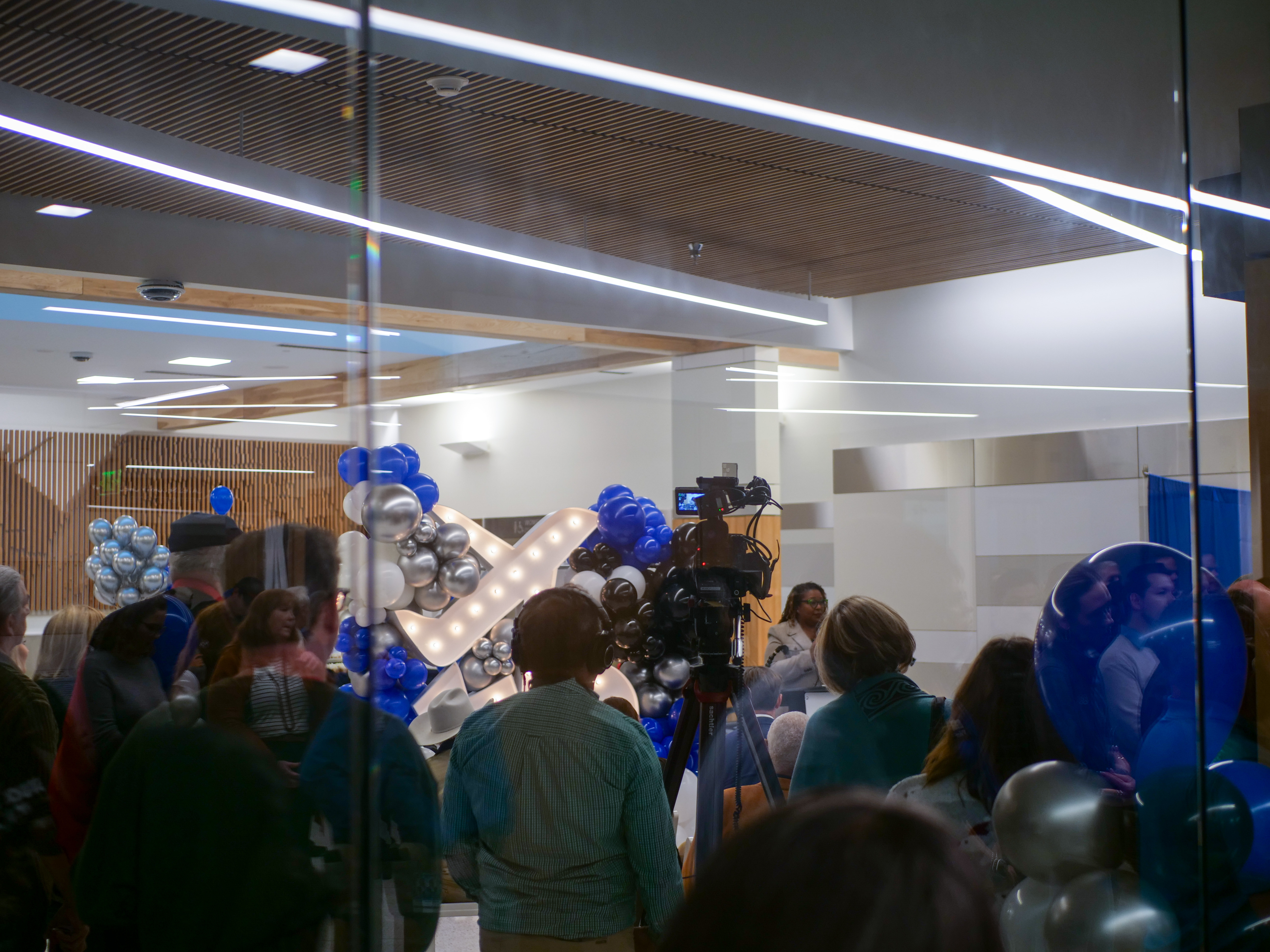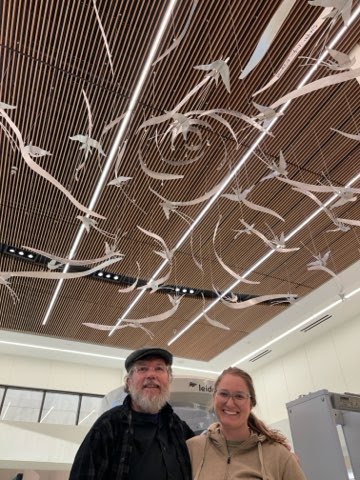Now on display at the Waco regional airport
The Project
The City of Waco initiated a complete refurbishment of Waco Regional Airport in 2021. As part of the project, the City collaborated with Creative Waco to commission four public art pieces for the refreshed terminal. Community pride, “wow” factor, and high-quality artworks were all goals of the project, which was broadly intended to tell the many stories of Waco. Four artists were selected in 2022-2023 for their proposal’s ability to highlight Wacos distinct culture, diverse community, natural beauty, and attractions. The collection enhances the airport’s new look by creating a welcoming, distinctive and impressive first and last impression for all airport visitors to enjoy.
ARTWORKS
Waco, Texas--Past Present and Future, 2023
Mike Tabor (b. 1956)
Acrylic and paper on canvas
Texas artist Mike Tabor uses bold lines and colors to tell stories of Waco through time. The historic Waco Suspension Bridge serves as an anchor within the composition, and is shown in two forms: with the brick facing and crenelated parapet present when the bridge opened in 1870, and the stucco facing completed in 1914 that we know today. The curved suspension cables highlight a dramatized Texas sky while simultaneously mimicking the curved brass inlays of the airport terminal floor below your feet. Indigenous flora and fauna as well as symbols of economic prosperity are represented as well. Look closely, as the artist also incorporated text elements that reference components depicted in the artwork.
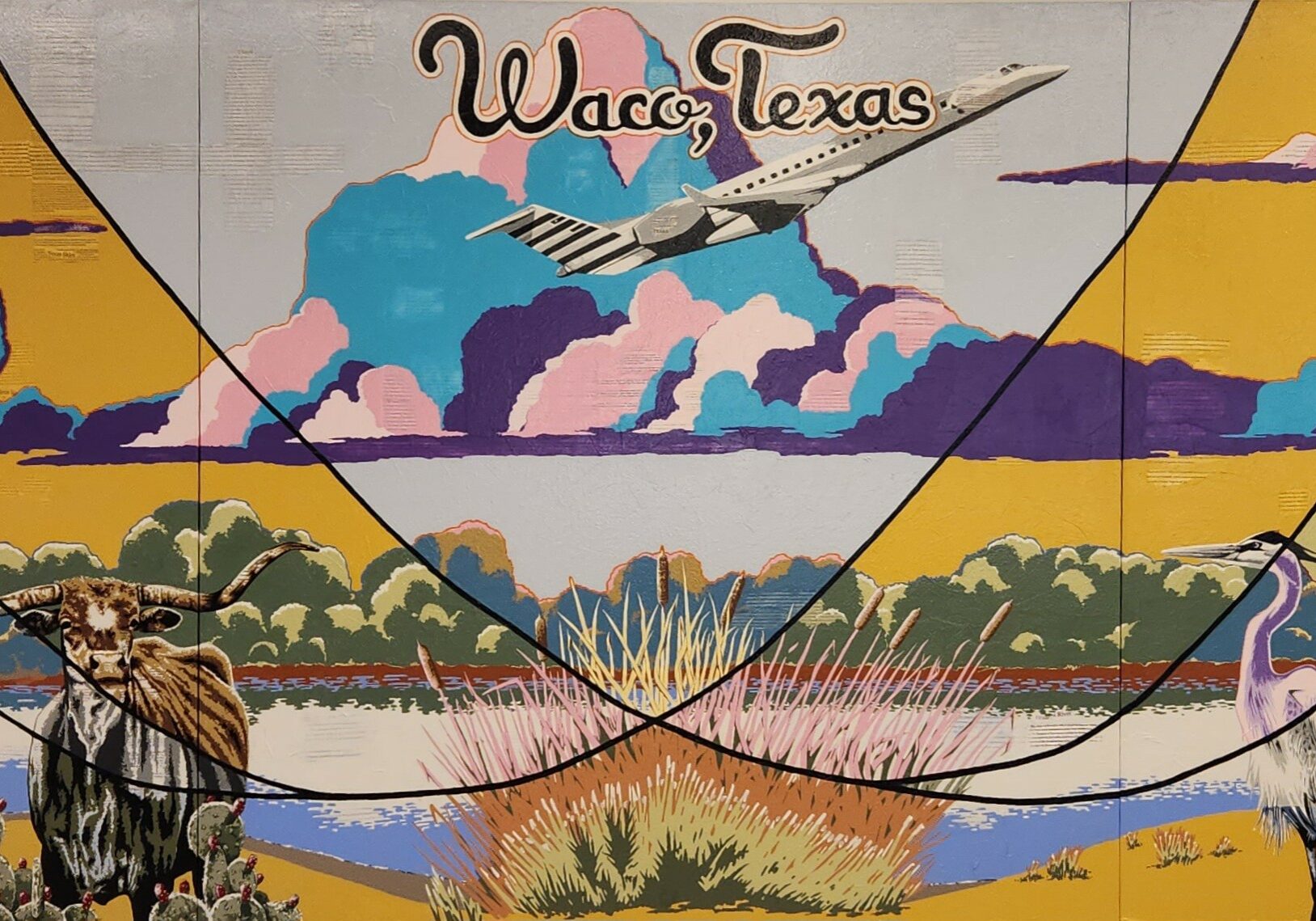
Artist Statement
My primary interest is to expand techniques to interpret all subject matter using fewer literal representations. To produce visual statements using a variety of elements regardless of the elevations. By expanding creative interpretations, solutions can be explored in an endless variety of ways.
The concern for layers of light, intensity of color, and line values began with the pop-art movement. My figurative work began with a sensitive romanticism but has transitioned to an expressionistic representation. I credit the expressionist George Klimt for my interpretation of color harmonies, light, mood, and design.
My current practice involves combining assemblage elements in dense textural paintings. The foundation for this series was trying to reach conclusions using experimental applications. Expressing feelings and emotions without conforming to traditional representations of the subject.
It’s this background that I can attribute expressionistic exploration as a means of completing a conclusion. The conclusion that I make is that artists should seek their own reward in the process and the complete release from thought while making work and being indifferent to praise, ridicule, failure or success.
meet Mike Tabor
Mike Tabor has over 40 years of professional experience as an artist and arts educator. He works primarily in sculpture and painting, and works in a variety of settings. His bronze sculptures, works on canvas, and murals can be seen in both temporary and permanent installations across the United States, and he has also created a large portfolio of works in response to commissions from individuals, groups, corporations and institutions. You can see examples of Tabor’s work along the Tarrant Regional Water District’s Trinity Trails in Fort Worth, in Arlington’s Globe Life Park, and on the campus of his alma mater, Tarleton State University.
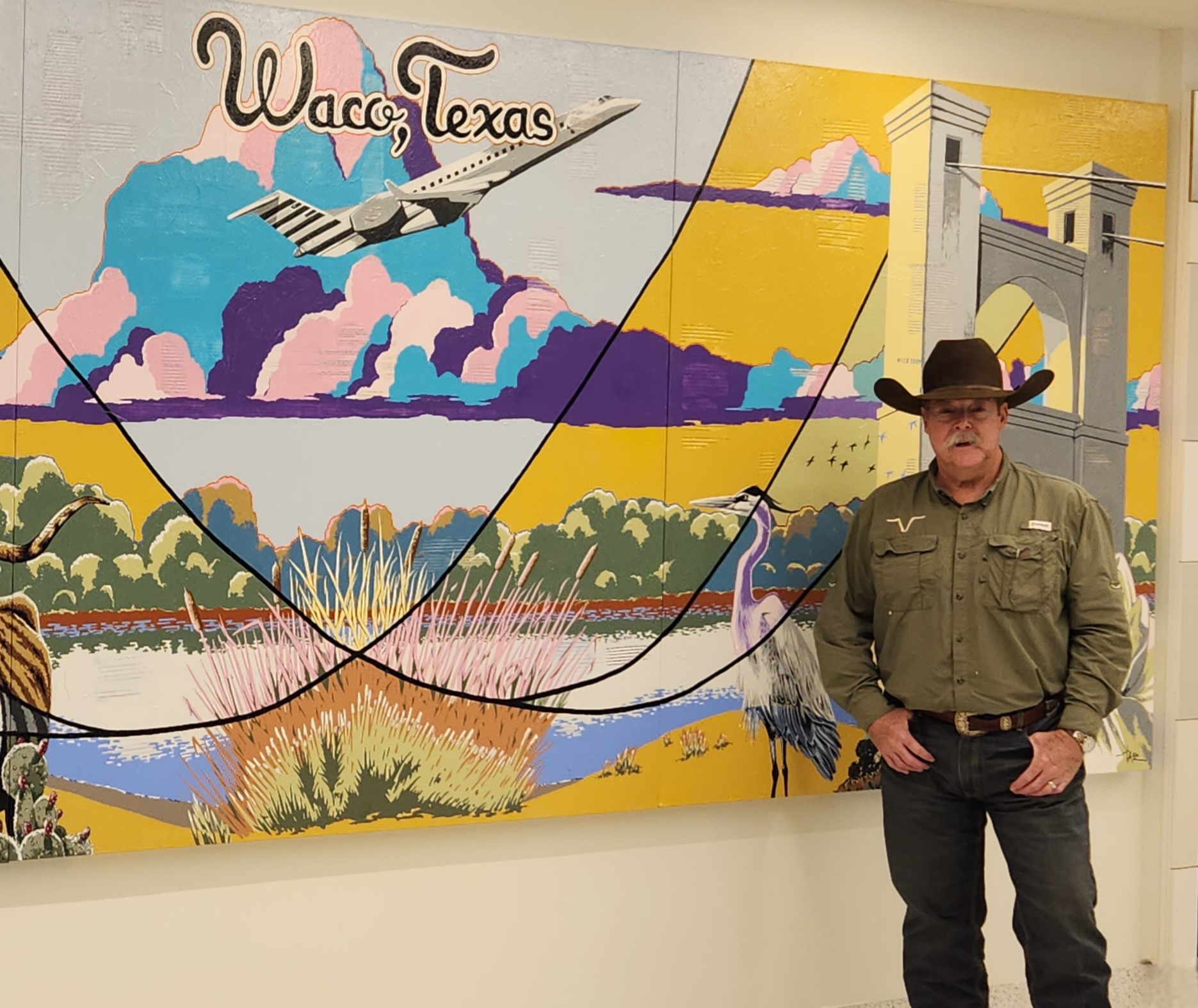
Silent Wings, Taking Flight, 2023
Bryant Stanton (b. 1958), Stanton Studios, artist/designer with Morgan Eyring of Nickel Metalsmith, fabricator
Aluminum, aircraft cable, dichroic glass
Waco-based artist Bryant Stanton’s suspended sculpture design incorporates several elements that tell the story of flight in our community. Scissor-tailed flycatchers are indigenous to Central Texas and are often seen perched on fences, utility lines and in trees. The swooping metal arcs evoke the birds’ flight paths as well as aircraft contrails and the concentric circles of a radar screen. The names laser-cut into the design represent the many women who served as Women Army Service Pilots (WASPs) at Blackland Army Air Field, which was located at this site during World War II.
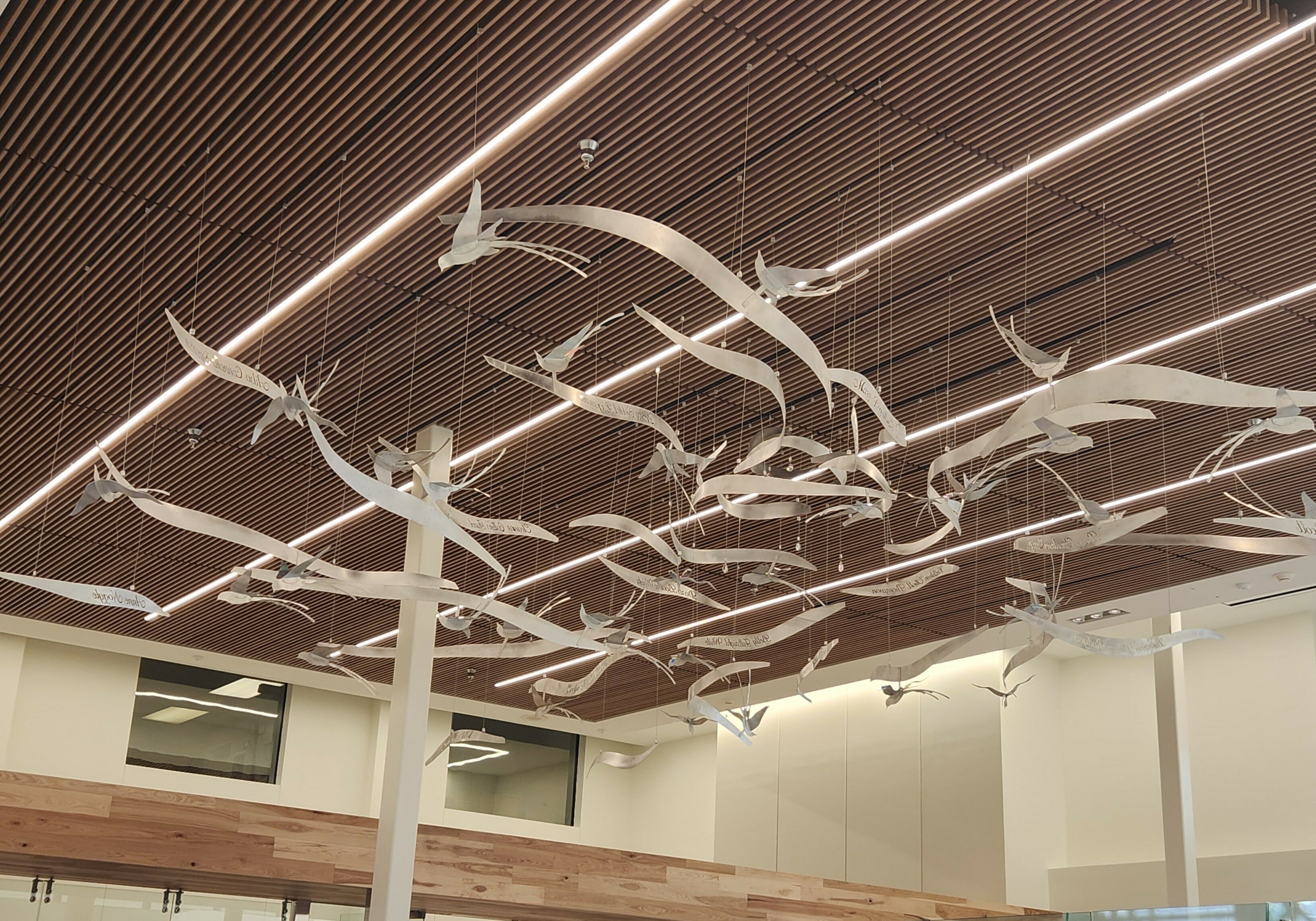
Artist Statement
Planes fly into and out of airports, orchestrated by the conductors in control towers. Travelers embark and arrive at an airport, passing through the concourse, a rhythm of arrivals and departures. Hence, my inspiration is the airport's history, nature, birds, and flight. We created a visual, meditative, sculptural piece amidst frenetic airport travel.
As the Waco Regional Airport progresses, we look back to the beginning. The Scissor Tailed Flycatcher (Aero-Birds) is an ode to the black land prairie and harkens back to the airport's history as Blackland Army Air Field, where the "Silent Winged Gliders” and WASP once briefly soared.
The Air Field is forgotten, but the Scissor Tails still dance, flit, and soar around the grassy land surrounding our growing Waco airport.
To honor the sixteen female aviators stationed at Blackland Army Flying School, we cut their names in the flight trails and staging of our Aero-Birds. WASP aviators helped the U.S. win WWII. These women were not military service members but were civilian employees, and it wasn't until 1977 that they were granted military status. On July 1, 2009, President Obama and the United States Congress awarded the WASP the Congressional Gold Medal.
Meet Bryant stanton
Waco-based artist and designer Bryant J. Stanton began working in glass in the late 1970s, when he first made stained-glass suncatches for a Waco gift store. Stanton opened Stanton Glass Studio in 1979. Through the years, the studio added wood and metal to its portfolio, and a change in name to Stanton Studios followed. Today, Stanton’s team includes more than thirteen artisans, including his four adult sons. The firm designs and fabricates both custom architectural elements and fine art commissions, and also works to preserve architectural art in historical landmarks. Locally, Stanton’s work can be seen as part of the Waco Sculpture Zoo along the Brazos River, at McLennan Community College, and at St. Alban’s Episcopal Church.
Welcome to Waco, 2023
Eirini Linardaki
Digital collage of fabric patterns
This colorful, attention-grabbing artwork was designed to illustrate many of the structures that can be seen throughout Waco. The landmark ALICO Building is recognizable as the tallest structure in the stylized skyline, and the Waco Suspension
The bridge is shown centered over the Brazos River. The artist incorporates high-resolution scans of vintage fabrics into her work, and in this case, also included illustrations of the phrase “Welcome to Waco” contributed by locals in their languages of origin. The sky captures additional “Welcome to Waco” translations in over fifty languages, representing the many cultures and people of our community.
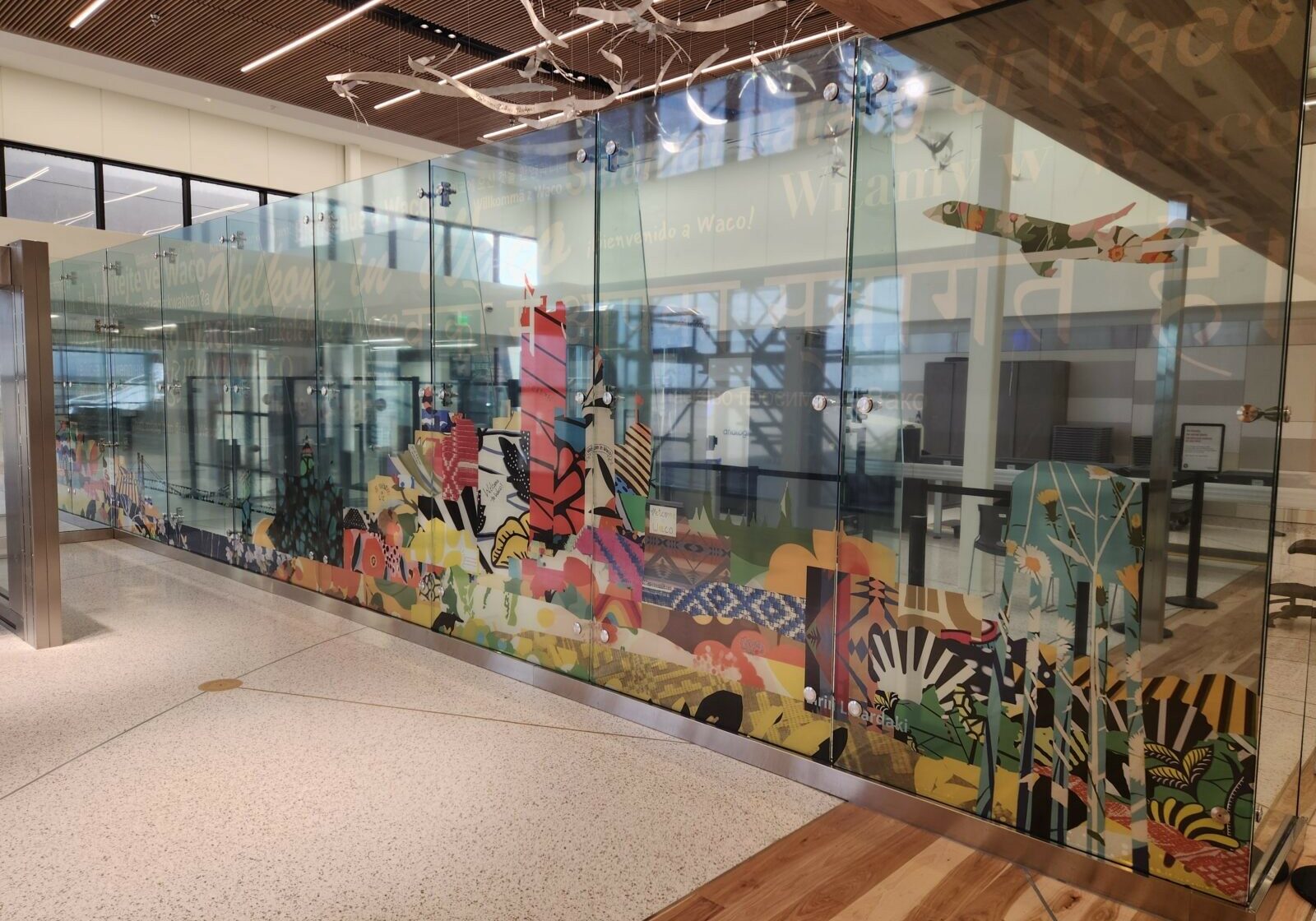
Artist Statement
As an artist, I am inspired by the world and diverse cultures and communities I encounter. In my art, I seek to capture and convey the beauty, complexity, and depth of these experiences. One of the ways I do this is through the use of patterns in my collages. I collect fabrics everywhere I travel, and each piece has a unique history and story. By layering and combining these fabrics, I create textured compositions that speak to the rich tapestry of our shared human experience.
In my work, I strive to push the boundaries of traditional collage techniques, experimenting with different materials and digital techniques to create evocative compositions. I am particularly interested in exploring the intersection of art and anthropology, using my collages to delve into identity, memory, and cultural exchange themes.
Through my art, I hope to foster a sense of connection and understanding between people from different backgrounds and experiences. I believe that art has the power to bring people together and facilitate dialogue, and I am passionate about using my work to promote cross-cultural understanding and appreciation.
meet Eirini Linardaki
Eirini Linardaki is an artist and public art project developer. She studied fine arts in Ireland, Berlin, and France, and is known for her impactful public art projects in collaboration with NYC organizations and Newark, New Jersey initiatives. She's recognized for reflecting Newark's history through installations with Project for Empty Space and others. Linardaki extends her influence globally, conducting workshops on accessibility and multiculturalism in countries like Liberia and France. In 2019, she founded the "Occupy Art Project," uniting artists from the US, France, and Greece. Awarded the 2022 Artivist Award from Sing For Hope, Linardaki is also a dedicated mother of two.
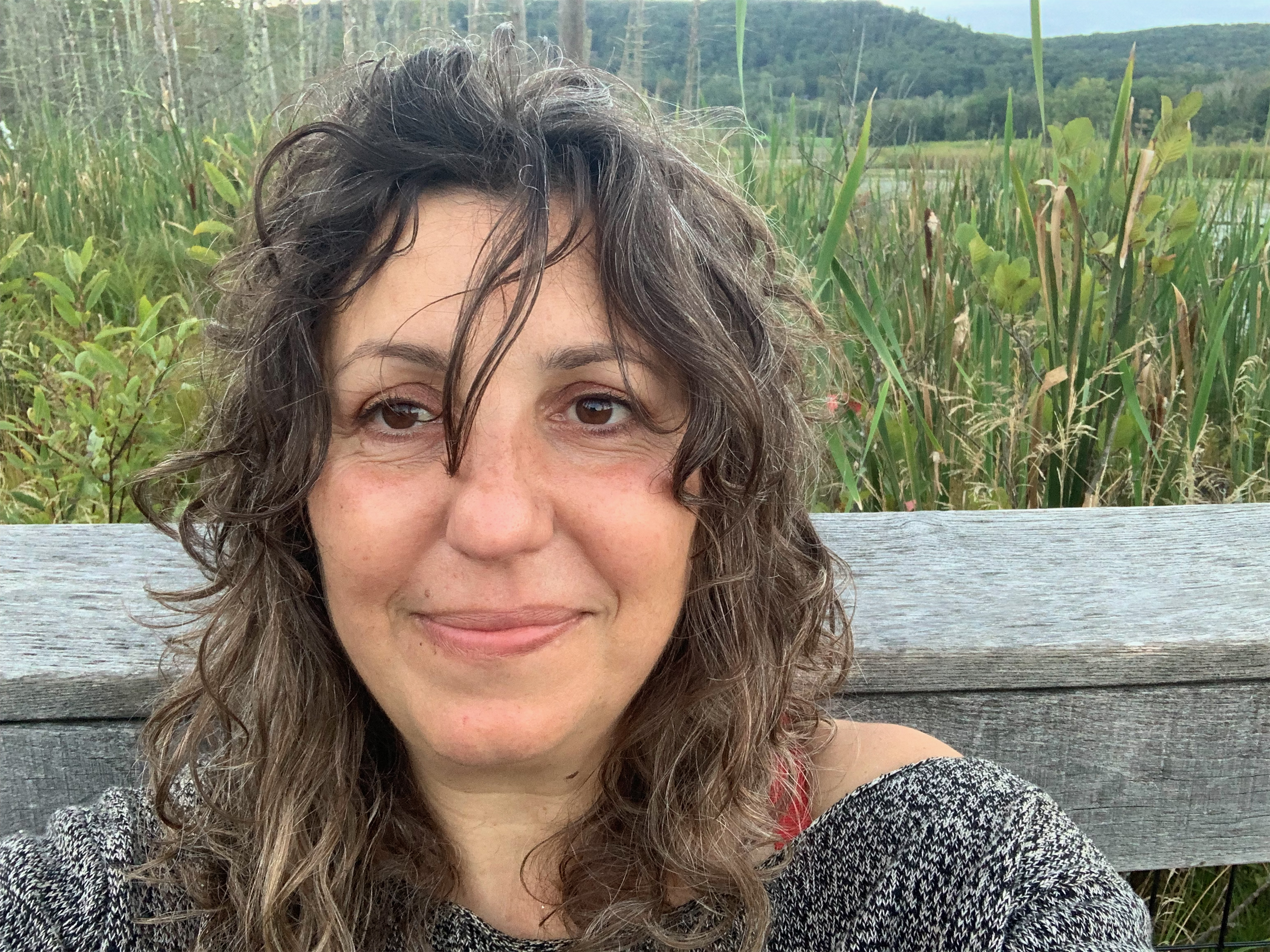
Ice Age Migrants, 2023
Manca Ahlin (b. 1977), MANTZALIN Studio
Jute rope, cotton rope, stainless steel
This large-scale lacework piece illustrates a mother and baby Columbian mammoth, a species once indigenous to this area. The artist depicted the pair using a technique called bobbin lace, which traditionally involves braiding and twisting strands of thread wound on small bobbins used to manage them. Here, the artist used computer aided design and two types of rope to create pieces similar to life-size. Layering of the lace pieces and the resulting shadows create dimension and depth. Less than three miles from the airport you can find WacoMammoth National Monument, the location of the nation’s only known nursery herd of Pleistocene Epoch (Ice Age) Columbian mammoths.

Artist Statement
Growing up in a small mountain village with strong community connections and limited resources and then moving to New York City and being immersed in a melting pot of diverse cultures from around the world, it is rooted in me to live an active lifestyle, to be considerate with environment, to use local materials and to be always open to new conditions and experiences.
My work has grown from the local tradition of bobbin lace-making which I have elevated to the architectural scale by using contemporary design methods and construction materials at much larger scale than traditional lace--instead of thin thread I use rope, cable, wire or fiber optic cable.
I create site specific works that react to the existing environment. They don’t have frames or pedestals but complement the existing space and are integrated into it directly with just minimal and thoughtful structural interventions. Architectural lace installations are ‘grown’ inside the space like a spider web inside an opening or an arched ceiling, crawling across the wall or spanning between structural elements.
Lace objects challenge the structural possibilities to transgress the materiality and applications of the once delicate decorations and are becoming self-supporting three-dimensional functional elements.
Meet Manca Ahlin
Manca Ahlin grew up in Slovenia, and now lives and works in New York City. As a child, she learned traditional arts and crafts techniques from her family and through formal training; she later studied product design and architecture and pursued a professional career in those fields. Ahlin utilizes her wide-ranging skills and experience to create site-specific works that respond to existing environments, combining traditional bobbin lace techniques with contemporary tools and unexpected materials. Ahlin has installed site-specific work across the United States and Europe, including at the Children’s Museum of Pittsburgh, Etsy headquarters, and the Božidar Jakac Art Museum in Slovenia.

